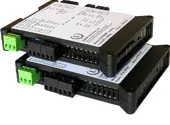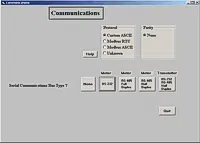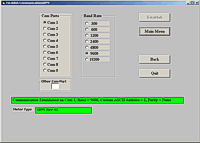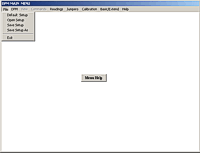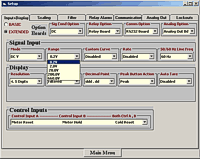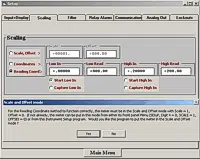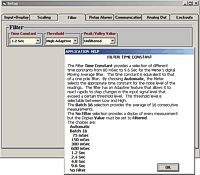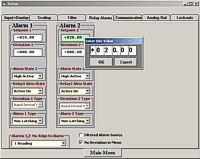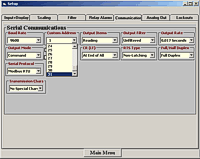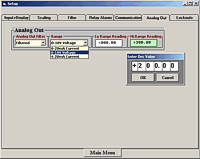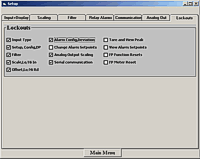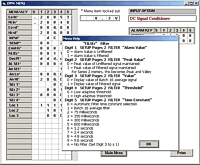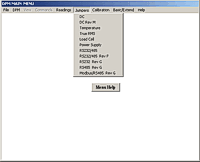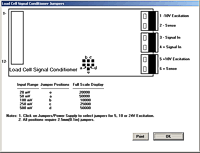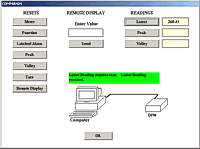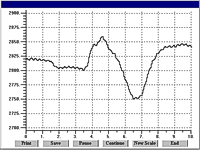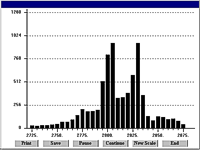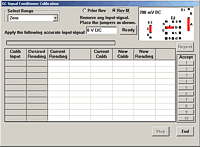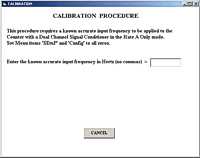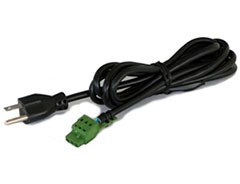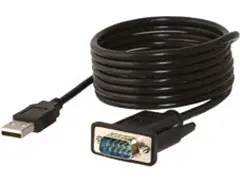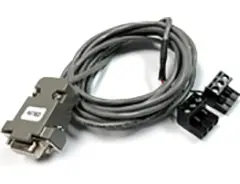- Description
- Quick Selector Guide
- Specifications
- Setup Software
- Mechanical
- Documents
- Applications
- Accessories
Features
- Times periodic events with width from 1 µs to 199.999 s
- Transmits average time of periodic events with width from 1 µs to 199.999 s
- Resolution to 0.2 µs, rep rated to 250 kHz
- Inputs from NPN or PNP proximity switches, contact closures, digital logic, or magnetic pickups down to 12 mV
- Trigger on positive or negative pulse edges
- 4-20 mA, 0-20 mA, 0-10V or -10V to +10V transmitter output, (isolated)
- Analog output resolution 0.0015% of span, accuracy ±0.02% of span
- Ethernet data I/O, Modbus TCP
- Dual 120 mA solid state relays for alarm or control (isolated)
- 5V, 10V, 12V, or 24V dc transducer excitation output (isolated)
- Power 85-264 Vac / 90-300 Vdc or 10-48 Vdc / 12-32 Vac (isolated)
- DIN rail mount housing, 22.5 mm wide, detachable screw-clamp connectors
- Operating temperature from -40°C to 70°C (-40°F to 158°F)
Certificates of Compliance
The Laureate™ LTE Series DIN rail analog transmitter with ethernet communication and analog outputs for versatile connectivity.
The digitally programmable transmitter features two relays for alarm or control. The series offers exceptional accuracy with Input frequencies from 0.005 Hz to 1 MHz. The LTE Series transmitters offer the same high performance, signal conditioning, and programmable features as Laureate digital panel meters, counters, and timers.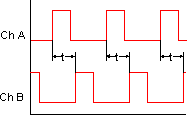
The Laureate 4-20 mA, 0-20 mA, 0-10V or -10V to +10V and ethernet output transmitter for time interval can transmit pulse width or time delay between individual pulses to a resolution of 0.2 µs for periodic events. It can also transmit average pulse width or average time delay between multiple pulses.
Time interval is measured between inputs on channels A and B. Timing starts when a pulse is applied to Channel A (selectable positive or negative edge), and ends when a pulse is applied to Channel B (selectable positive or negative edge). In case of a single pulsed signal, the A and B inputs can be tied together. A positive or negative slope may be selected to start timing, and the opposite slope must be selected to stop timing. Timing is achieved by counting 5.5 MHz clock pulses. Multiple integral time intervals are averaged over a gate time which is selectable from 10 ms to 199.99 s and also controls the maximum output rate.
The dual-channel signal conditioner used for pulse detection accepts inputs from proximity switches with PNP or NPN output, TTL or CMOS logic, magnetic pickups, contact closures, and other signals from 12 mV to 250 Vac. Jumper selections provide optimum operation for different sensor types and noise conditions. A built-in 5V, 10V or 24V dc excitation supply can power proximity switches and other sensors, and eliminate the need for an external power supply.
Exceptional Accuracy and Stability. Laureate transmitters determine frequency by taking the inverse of period as measured with a calibrated quartz crystal time base. This results in extremely accurate and stable 6-digit internal readings (±999,999 counts), which are then processed in software. The analog output is generated by an ultra-linear 16-bit (65,536 step) digital-to-analog converter (DAC) for 0.02% output accuracy. The update rate of the transmitter output is a programmed gate time + 30 ms + 0-2 signal periods. For a 60 Hz signal, the update rate would be 20 per second. Such fast update rates are ideal for alarm and control.
The update rate of the transmitter output is a programmed gate time + 30 ms + 0-2 signal periods. For a 60 Hz signal, the update rate would be 20 per second. Such fast update rates are ideal for alarm and control.
All signal conditioner board ranges are factory-calibrated, with calibration factors for each range securely stored in an onboard EEPROM. These factors can be scaled via software to accommodate external shunts, enabling field replacement of signal conditioner boards without necessitating recalibration of the associated transmitter. For optimal accuracy, factory recalibration is recommended annually. All Laurel Electronics instruments undergo factory calibration using the industry-leading Fluke calibrators, which are recalibrated yearly and certified traceable to national standards, ensuring the highest level of precision and reliability.
Laureate Transmitters are easily programmed with Laurel’s free Instrument Setup Software, downloadable from our website and compatible with Windows PCs, requiring a data interface board for setup.
Standard Features of Laureate LTE Transmitters Include:
- Ethernet I/O, (isolated). The supported protocols are Modbus RTU and ASCII, which are tunneled via Modbus TCP. Note that RS232 or RS485 data I/O is provided by Laurel's LT Series transmitters.
- 4-20 mA, 0-20 mA or 0-10V analog transmitter output, (isolated), jumper-selectable and user scalable. All selections provide 16-bit (0.0015 ) resolution of output span and 0.02% output accuracy of a reading from -99,999 to +99,999 counts that is also transmitted digitally. Output isolation from signal and power grounds eliminates potential ground loop problems. The supply can drive 20 mA into a 500 ohm (or lower) load for 10V compliance, or 10V into a 5K ohm (or higher) load for 2 mA compliance.
- Dual-channel pulse inputs for voltage signals, NPN or PNP proximity switches, contact closures, magnetic pickups or flow meters.
- Dual solid state relays, (isolated). Available for local alarm or control. Rated 120 mA at 130 Vac or 180 Vdc.
- Selectable transducer excitation output, (isolated), user selectable 5V@100 mA, 10V@120 mA, 12V@100 mA or 24V@50 mA.
- Power 85-264 Vac, (isolated), low-voltage 10-48 Vdc or 12-32 Vac power is optional.
Digital signal filtering modes can be selected to ensure stable readings in electrically noisy environments.
- An unfiltered selection provides true peak and valley readings and aids in control applications.
- A batch average filter selection averages each 16 conversions.
- An adaptive moving average filter selection provides a choice of 8 time constants from 80 ms to 9.6 s. When a significant change in signal level occurs, the filter adapts by briefly switching to the shortest time to follow the change, then reverts back to its selected time constant. An Auto setting selects the time constant selection based on signal noise.
Peak and valley values are automatically captured. These may be displayed via Laurel's free Instrument Setup Software, which runs on a PC under MS Windows or can be transmitted as serial data.
Two control inputs (CMOS/TTL levels, logic 0 = tied to digital ground, logic 1 = open) or dry contacts that can be set to control / activate 14 transmitter commands.
An (isolated) 5, 10, 12, or 24 Vdc excitation output is standard to power transducers or two-wire transmitters. Ratiometric operation, which automatically compensates for changes in the applied excitation, is jumper selectable for applications, such as bridges, where the signal to be measured is proportional to the excitation level.

LTE series DIN rail transmitters & signal conditioners can be interfaced to a wide range of sensors and transducers using one of seven available plug-in signal conditioner boards. The transmitters duplicate the high performance (high accuracy, high read rate) and extensive programmable features of Laureate 1/8 DIN digital panel meters, counters and timers. They utilize the same signal conditioners boards, much of the same firmware, and Laurel's free Windows-based Instrument Setup Software. They come in a compact DIN rail mount package with detachable screw-clamp connectors for easy wiring.
The LTE series Transmitters accessible from this page include a 4-20 mA, 0-20 mA, 0-10V, or -10V to +10V analog output (isolated, user selectable), an ethernet serial data interface (isolated, user selectable), and dual 120 mA solid state AC/DC relays (isolated). An (isolated) 5, 10, 12, or 24 Vdc transducer excitation output is included with all models other than those with a temperature or AC RMS signal conditioner.
Connecting Laureate LTE Transmitters to a Local Area Network (LAN)
Laurel LTE series Ethernet transmitters can connect directly to a LAN via an Ethernet cable. Up to 30 Laureate LT Transmitters and/or Digital Panel Meters can be configured for RS485 and daisy-chained to an LT Transmitter for seamless LAN integration. Setup for both configurations is streamlined using Laurel’s free Instrument Setup Software, which simplifies node discovery and transmitter configuration.
Flexible Communication Options for LTE Transmitters
Laureate Transmitters can be equipped with Laurel communication boards to support various interfaces and protocols. These include serial interfaces with ASCII or Modbus RTU protocols, and Ethernet interfaces with web access, ASCII, or Modbus TCP/IP protocols, ensuring versatile connectivity for your commercial applications.
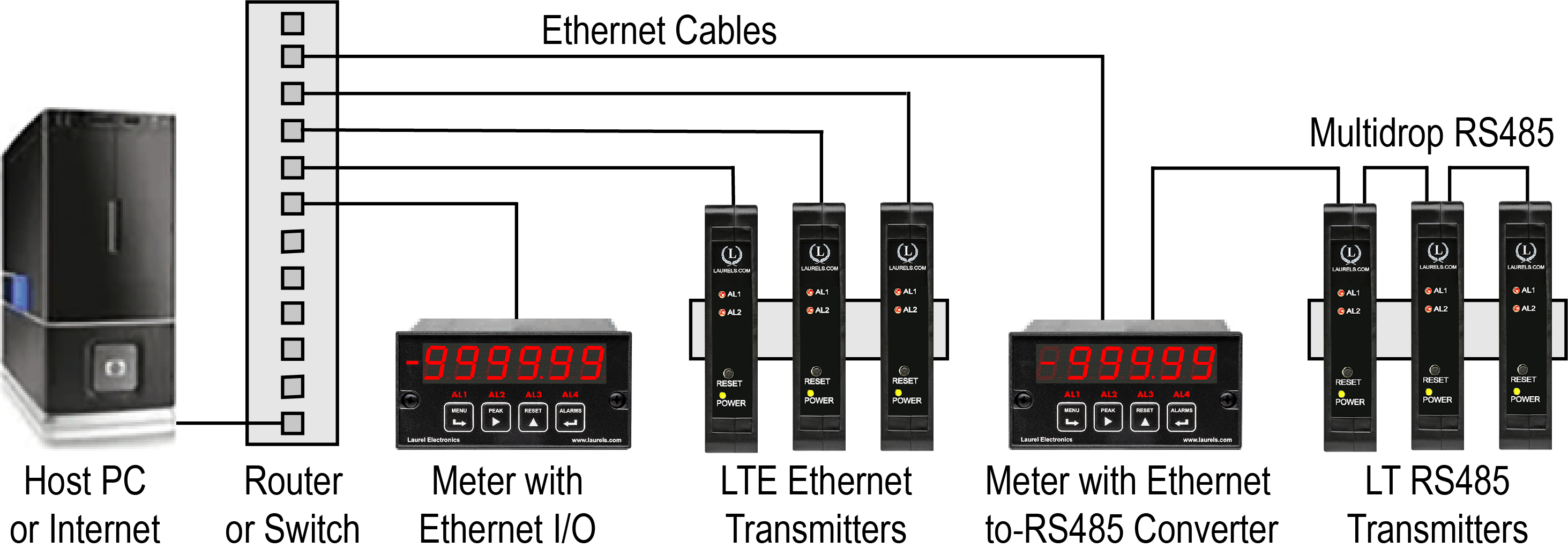
| LTE Transmitter Signal Input & Function | Model Series | Analog Output | Ethernet I/O | Dual Relays | |
|---|---|---|---|---|---|
| 1 | DC Input Voltage and Current | LTE-DC |  |
 |
 |
| 2 | AC RMS Voltage or Current | LTE-RMS |  |
 |
 |
| 3 | Process Voltage or Current | LTE-P |  |
 |
 |
| 4 | Strain Gauge or Potentiometer Follower | LTE-SG |  |
 |
 |
| 5 | Weighing Applications | LTE-WA |  |
 |
 |
| 6 | Load Cell & Microvolt Signals | LTE-WM |  |
 |
 |
| 7 | Thermocouple (Types J, K, T, E, N, R, S) | LTE-TC |  |
 |
 |
| 8 | RTD Temperature | LTE-RTD |  |
 |
 |
| 9 | Resistance in Ohms | LTE-R |  |
 |
 |
| 10 | Frequency, Rate, Speed | LTE-FR |  |
 |
 |
| 11 | Pulse Input Totalizer | LTE-FR |  |
 |
 |
| 12 | Process Signal Totalizer | LTE-VF |  |
 |
 |
| 13 | Batch Controller Analog Input | LTE-FR |  |
 |
 |
| 14 | Batch Controller Pulse Input | LTE-FR |  |
 |
 |
| 15 | Sum, Difference, Ratio, Product of 2 Inputs | LTE-FR |  |
 |
 |
| 16 | On/Off Duty Cycle | LTE-FR |  |
 |
 |
| 17 | Stopwatch Timing for Single Events | LTE-FR |  |
 |
 |
| 18 | Average Time of Periodic Events | LTE-FR |  |
 |
 |
| 19 | AC Phase Angle and Power Factor | LTE-FR |  |
 |
 |
| 20 | Quadrature Position or Rate | LTE-QD |  |
 |
 |
Laureate™ Ethernet & 4-20 mA Transmitter of Time Interval of Periodic Events
| Pulse Input | ||||
|---|---|---|---|---|
| Types | AC, pulses from NPN, PNP transistors, contact closures, magnetic | |||
| Signal Ground | pickups | |||
| Minimum Signal | Common ground for channels A & B. | |||
| Maximum Signal | Nine ranges from (-12 to +12 mV) to (+1.25 to +2.1V). | |||
| Maximum Frequency | 250 Vac | |||
| Contact Debounce | 1 MHz, 30 kHz, 250 Hz (selectable). | |||
| Time Base Accuracy | 0, 3, 50 ms (selectable). | |||
| Span Tempco | Quartz crystal calibrated to ±2 ppm. | |||
| Long-term Drift | ±1 ppm/°C (typ), ±5 ppm/year | |||
| Recalibration: All ranges are calibrated at the factory. Recalibration is recommended every 12 months. | ||||
| Time Interval Mode | ||||
| Timing Start | Channel A pulse, + or - edges | |||
| Timing Stop | Channel B pulse, + or - edges | |||
| Update Rate | Gate time + 30 ms + 0-2 time intervals | |||
| Gate Time | Selectable 10 ms to 199.99 s | |||
| Time to Zero Output | Selectable 10 ms to 199.99 s | |||
| Resolution | ||||
| 0 - 199.999 s | 1 ms | |||
| 0 - 99.9999 s | 100 µs | |||
| 0 - 9.99999 s | 10 µs | |||
| 0 - .999999 s | 1 µs | |||
| 0 - .099999 s | 0.2 µs (after averaging) | |||
| Analog Output (standard) | ||||
| Output Levels | 4-20 mA and 0-10 Vdc (selectable) | |||
| Compliance, 4-20 mA | 10V (0-500Ω load) | |||
| Compliance, 0-10V | 2 mA (5 kΩ load) | |||
| Output Resolution | 16 bits (65,536 steps) | |||
| Output Accuracy | ±0.02% of output span | |||
| Output Update Rate | Programmed gate time + 30 ms + 0-2 signal periods | |||
| Output Isolation | 250V rms working, 2.3 kV rms per 1 minute test | |||
| Ethernet Data I/O (standard) | ||||
| Type | 10/100 Base-T Ethernet per IEEE 802.3 | |||
| Data Rates | 300, 600, 1200, 2400, 4800, 9600, 19200 baud | |||
| Output Isolation | 250V rms working, 2.3 kV rms per 1 min test | |||
| Serial Protocol | Modbus TCP | |||
| Modbus Compliance | Modbus over Serial Line Specification V1.0 (2002) | |||
| Digital Addresses | 247 | |||
| Dual Relay Output (standard) | ||||
| Relay Type | Two solid state relays, SPST, normally open, Form A | |||
| Load Rating | 120 mA at 140 Vac or 180 Vdc | |||
| Excitation Output (standard) | ||||
| 5 Vdc | 5 Vdc ± 5%, 100 mA (jumper selectable) | |||
| 10 Vdc | 10 Vdc ± 5%, 120 mA (jumper selectable) | |||
| 12 Vdc | 12 Vdc ± 5%, 100 mA (jumper selectable) | |||
| 24 Vdc | 24 Vdc ± 5%, 50 mA (jumper selectable) | |||
| Output Isolation | 50 Vdc from signal ground | |||
| Power Input | ||||
| Standard Power | 85-264 Vac or 90-300 Vdc | |||
| Low Power Option | 10-48 Vdc or 12-32 Vac | |||
| Power Frequency | DC or 47-63 Hz | |||
| Power Isolation | 250V rms working, 2.3 kV rms per 1 min test | |||
| Power Consumption | 2.5W typical at 24V, 4.0W with max excitation output | |||
| Environmental | ||||
| Operating Temperature | -40°C to 70°C (-40°F to 158°F) | |||
| Storage Temperature | -40°C to 85°C (-40°F to 185°F) | |||
| Relative Humidity | 95% at 40°C, non-condensing | |||
| Cooling Required | Mount transmitters with ventilation holes at top and bottom. Leave 6 mm (1/4") between transmitters, or force air with a fan. | |||
| Mechanical | ||||
| Enclosure | Rugged black polycarbonate housing material | |||
| Mounting | 35 mm rail per DIN EN 50022 | |||
| Dimensions | 129 x 104 x 22.5 mm case | |||
| Connectors | Detachable screw clamp connectors meet VDE / IEC / UL / CSA standards. RJ45 jack for Ethernet | |||
| Tightening Torque | Screw terminal connectors: 5 lb-in (0.56 Nm) | |||
| Weight | Complete transmitter: 183 g (6.5 oz) | |||
| General | ||||
| Programming | Utilize Laurel's free Instrument Setup Software, which runs on a PC under MS Windows. | |||
| Security | Lockout options available using Laurel's free Instrument Setup Software. | |||
| Warranty | 3 years parts & labor | |||
| Recalibration: All ranges are calibrated at the factory. Recalibration is recommended every 12 months. | ||||
Transmitter Pinout
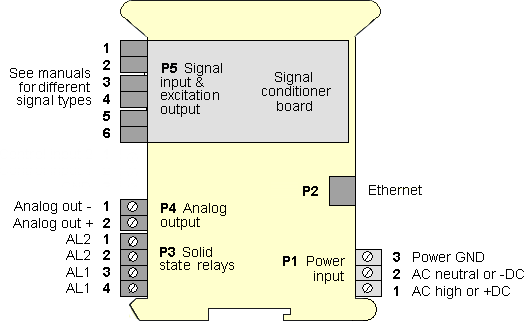
Free Instrument Setup Software for Series 2 Laureates
Free Downloadable Windows-based Instrument Setup (IS) software (Data Interface Board Required) for use with our programmable Digital Panel Meters, Scale Meters, Counters, Timers, Remote Displays, and Transmitters, are an easy method to set up Laureate 1/8 DIN digital panel meters, counters, timers, remote displays, and DIN-rail transmitters, as explained in the Instrument Setup Software Manual. Laureate 1/8 DIN instruments can also be set up from the front panel, as explained in their respective Owners Manuals. Instrument Setup software is of benefit whether or not the PC is connected to the instrument.
- When the PC is connected to the instrument, Instrument Setup software can retrieve the setup file from the instrument or open a default setup file or previously saved setup file from disk View Setup, then provides graphical user interface (GUI) screens with pull-down menus applicable to input, display, scaling, filtering, alarms, communications, analog output, and front panel lockouts. Fields that are not applicable to the instrument as configured are either left out or grayed out. Clicking on any item will bring up a detailed Help screen for that item. After editing, the setup file can be downloaded, uploaded to the instrument, or saved to a disk. The same setup file can then be downloaded into multiple instruments.
- When the PC is not connected to the instrument, the above GUI screens can be used to set up a virtual instrument. The setup file can then be saved to disk. Switching toView Menu then brings up a screen with the required front panel programming steps. This view can be printed out for use at the instrument site and to serve as a hard copy record.
Download Free Instrument Setup Software
Installation
Set User Account Control (UAC) of MS Windows to "Never notifiy me" so that Instrument Setup Software can create directories. The UAC change screen can be reached as follows:
- Under Windows 7, click on the Windows Start button in the lower left of the desktop and enter "UAC" in the search field.
- Under Windows 8, navigate to Control Panel, then to the "User Accounts and Family Safety" section, and click on "Change User Account Control Settings."
- Under Windows 10, click on the Windows Start button in the lower left of the desktop, then on "Settings", and enter "UAC" in the search field.
- Reboot your computer for the changed UAC setting to take effect.

RJ11-to-DB9 cable with rear view of DB9 connector to PC
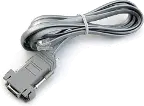
RS232 cable, meter to PC, P/N CBL01
Laureate 1/8 DIN Laureate instruments must be equipped with a serial communications board and be connected to the computer via a serial communications cable. The connection can be via RS232, RS485, USB or Ethernet. Following setup, the serial communications board may be removed from the instrument if desired. The wiring of the RS232 cable is illustrated above with end views of the two connectors.
Laureate LT Series transmitters come standard with a 3-wire serial interface, which can be jumpered for RS232 or RS485.
Laureate LTE Series transmitters come standard with an Ethernet interface.
Meter Setup Screens
Click on any of the reduced screens below for a full-size screen view, then click on the Back button of your browser to return to this page. The screens examples below are for a fully-loaded Series 2 Digital Panel Meter (DPM), which is connected to the PC via RS232. If the meter is a Series 1 meter (pre-2007), this is sensed by the software, and somewhat different screens are brought up. Please see Series 1 setup screens.











Meter Setup Utilities




From the Main Menu, click on Readings if your PC is connected to the meter. A pull-down menu then offers three choices: List, Plot and Graph.
- List presents the latest readings in a 20-row by 10-column table. Press Pause at any time to freeze the display. This is one method to capture peak readings.
- Plot generates a plot of readings vs. time in seconds. It effectively turns the DPM-PC combination into a printing digital oscilloscope.

- Graph generates a histogram where the horizontal axis is the reading and the vertical axis is the number of occurrences of readings. The display continually resizes itself as the number of readings increases.



Dimensions
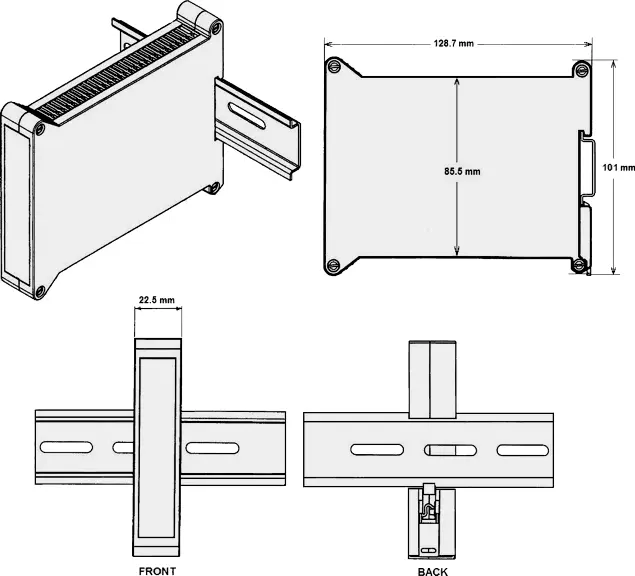
Dimensioned CAD assembly drawings in EPRT, STEP, x_t, .dwg, pdf file formats: Laureate-transmitter-case.zip (zipping prevents browser from opening CAD files as text files).
| Time Interval Mode for Time Delay | |
|---|---|
 |
For periodic pulses applied to A and B channels, time delays can be measured down to 0.2 µs resolution from the rising or falling edge of A to the rising or falling edge of B (selectable). |
| Time Interval Mode for Pulse Width | |
 |
The width of periodic pulses (t1 or t2) can be measured by tying the A and B channels together. As for time delay, readings are averaged over a user-selectable gate time. |
| Timing Process Dynamics with two Meters or Transmitters | |
 |
The start and stop pulses used for timing can be generated by the dual relay board in a Laureate panel meter, counter or transmitter. For instance, the start and stop pulse edges can be created as temperature passes two alarm setpoints, or temperature cycles in a hysteresis control mode. |
| Replacing an Oscilloscope with a Laureate Time Interval Meter or Transmitter | |
 |
An oscilloscope is great for viewing and timing pulses in a lab. However, in fixed installations where digital timing accuracy and control outputs are required, a low-cost Laureate time interval meter or transmitter will be the instrument of choice. Resolution to 0.2 µs is feasible. |
| Instrumenting a Pulsed Laser System | |
 Some of the many possibilities in instrumenting a pulsed laser system with Laureate dual-channel counters and transmitters: elapsed time, number of pulses, pulse width, pulse separation, duty cycle, and pulse rep rate. |
|
CBL02
USB-to-RS232 Adapter Cable
CBL04
RS232 Cable for LT Transmitters
What is the LTE DIN Rail Digital Transmitter with Ethernet Communication and Analog Outputs for Time of Periodic Events?
In the realm of industrial automation and process control, precise monitoring and data acquisition are crucial for optimizing operations and ensuring system efficiency. The LTE Series DIN Rail Digital Transmitter with Ethernet Communication and Analog Outputs is a sophisticated device designed to address these needs by offering advanced functionalities for tracking and managing periodic events. This article delves into the key features and benefits of this innovative transmitter.
Understanding the LTE DIN Rail Digital Transmitter
The LTE DIN Rail Digital Transmitter is a compact, high-performance instrument engineered to be mounted on a standard DIN rail, a common feature in industrial settings for organizing and securing electrical components. This transmitter is specifically designed to measure and monitor the time of periodic events, making it an essential tool for various applications where precise timing and data collection are required.
Key Features
-
Digital Transmitter Technology: The LTE Series employs digital technology to provide accurate and reliable measurements of periodic events. Digital transmitters are known for their precision, stability, and resistance to interference, ensuring that the data collected is both accurate and consistent.
-
Ethernet Communication: One of the standout features of the LTE Series is its Ethernet communication capability. This allows for seamless integration with existing network infrastructures, enabling real-time data transfer and remote monitoring. Ethernet connectivity enhances the flexibility of the transmitter, allowing users to access and analyze data from anywhere within the network.
-
Analog Outputs: The device is equipped with analog outputs, which are crucial for interfacing with other analog-based systems and instruments. These outputs provide a continuous signal proportional to the measured value, facilitating integration with various control systems and data acquisition platforms.
-
DIN Rail Mounting: The DIN rail mounting design simplifies installation and maintenance, making it easy to integrate the transmitter into existing control panels and systems.
-
Periodic Event Measurement: The transmitter is specifically designed to measure the time intervals of periodic events. This feature is particularly valuable in applications such as machinery maintenance, process control, and production monitoring, where understanding the timing and frequency of events is essential.
Applications
The LTE DIN Rail Digital Transmitter is versatile and can be utilized in various industries:
- Manufacturing: Monitoring the timing of machine cycles and process events to optimize production efficiency and prevent downtime.
- Utilities: Tracking periodic events in water and wastewater treatment processes to ensure regulatory compliance and operational reliability.
- Building Automation: Managing and monitoring time-based events in HVAC systems, lighting controls, and other building management systems.
- Transportation: Measuring and analyzing periodic events in transportation systems to enhance safety and performance.
Benefits
- Accuracy and Reliability: The digital technology and precise measurement capabilities ensure high accuracy and reliability in capturing and reporting periodic events.
- Real-Time Monitoring: Ethernet communication allows for real-time data access and remote monitoring, facilitating timely decision-making and system adjustments.
- Integration Flexibility: Analog outputs and Ethernet connectivity provide flexibility in integrating the transmitter with various control systems and data acquisition platforms.
- Ease of Installation: The DIN rail mounting design simplifies installation and maintenance, reducing setup time and ensuring a secure fit.
Conclusion
The LTE DIN Rail Digital Transmitter with Ethernet Communication and Analog Outputs for Time of Periodic Events represents a significant advancement in industrial measurement technology. Its combination of digital accuracy, network connectivity, and analog interfacing makes it a valuable tool for a wide range of applications. By providing precise measurements and real-time data access, this transmitter helps organizations optimize their operations, improve efficiency, and maintain control over critical processes.
Where is the LTE DIN Rail Digital Transmitter with Ethernet Communication and Analog Outputs for Time of Periodic Events Used?
In the realm of industrial automation and process control, accurate measurement and communication of time-based data are crucial for efficient operations. The LTE DIN Rail Digital Transmitter with Ethernet Communication is a sophisticated tool designed to cater to this need. But where exactly is such a device used, and what benefits does it offer? Let’s explore its applications and advantages.
Understanding the LTE DIN Rail Digital Transmitter
The LTE DIN Rail Digital Transmitter is engineered to measure and communicate time-related data, specifically for periodic events. Mounted on a DIN rail, a standard for industrial equipment, this device is compact and robust, making it suitable for various environments. The Ethernet communication feature allows it to seamlessly integrate with modern industrial networks, facilitating real-time data monitoring and management.
Key Applications
-
Industrial Automation:
- Event Counting: In industrial settings, tracking the time of specific events, such as machine cycles, production runs, or downtime, is essential. The LTE Series Transmitter accurately logs these events, allowing manufacturers to analyze performance and optimize operations.
- Process Monitoring: For complex production processes, this device can monitor and record the time between events, providing insights into process efficiency and identifying potential areas for improvement.
-
Building Management Systems (BMS):
- HVAC Systems: In building management, the transmitter can be used to monitor the time intervals of HVAC system events, such as compressor cycles or fan operations. This data is crucial for maintaining system efficiency and scheduling maintenance.
- Lighting Control: The transmitter can track the duration of lighting operations, helping in energy management and ensuring lights are used efficiently.
-
Energy Management:
- Power Consumption Analysis: By tracking the time of energy consumption events, the transmitter helps in analyzing power usage patterns. This information can be used to identify peak usage times and implement energy-saving strategies.
- Load Monitoring: In energy-intensive industries, monitoring the time of load events helps in managing and balancing energy loads to avoid overloads and reduce operational costs.
-
Transportation and Logistics:
- Fleet Management: For transportation fleets, the transmitter can monitor and record the time of vehicle events, such as engine run time or idle periods. This data aids in optimizing fleet operations and scheduling maintenance.
- Logistics Tracking: In logistics, tracking the time of events like container loading and unloading helps in managing inventory and improving supply chain efficiency.
-
Utilities and Infrastructure:
- Water and Wastewater Management: In utilities, the transmitter can be used to monitor time-based events in water treatment processes or wastewater management, ensuring proper operation and compliance with regulations.
- Infrastructure Monitoring: For infrastructure like bridges or tunnels, tracking time-based events such as inspections or maintenance activities is vital for safety and longevity.
Benefits of Using the LTE Transmitter
- Real-Time Data Access: Ethernet communication allows for real-time data transfer, enabling instant monitoring and decision-making.
- Accuracy and Reliability: The device ensures precise measurement of time-based events, crucial for process control and efficiency.
- Integration Flexibility: Its DIN rail mounting and Ethernet communication make it compatible with a wide range of industrial systems, providing flexibility in integration.
- Enhanced Analytics: Accumulated event data offers valuable insights for performance analysis and optimization.
Conclusion
The LTE DIN Rail Digital Transmitter with Ethernet Communication is a versatile tool with broad applications across various industries. Its ability to accurately measure and communicate time-based data helps in optimizing operations, enhancing efficiency, and ensuring effective management of processes. Whether in manufacturing, building management, energy, transportation, or utilities, this device is a valuable asset for modern industrial and infrastructure systems.
Less Information.








